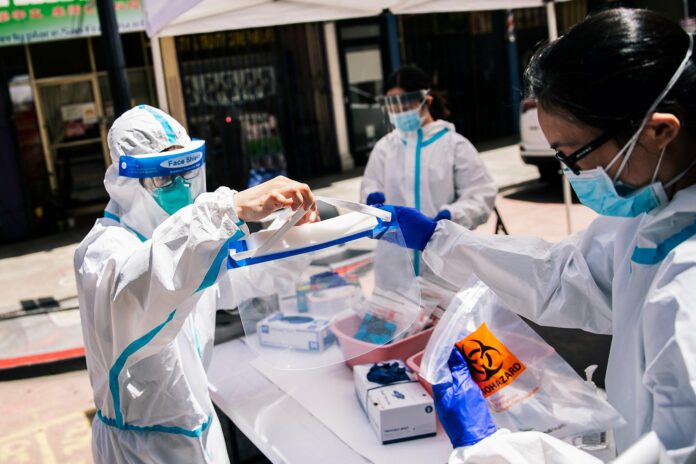Hospitalizations for COVID-19 hit new peaks in the Bay Area this week, with the nine counties reporting 491 patients on Thursday — a grim tally that shows the virus surging again after months of restrictions and sacrifices.
One of the hotbeds is Marin County, where officials are grappling with more than 1,400 cases among prisoners in San Quentin and a rapid spread in the Latino community, as essential workers in construction, food service, grocery stores or custodial jobs contract the virus and bring it home to their families.
On Friday, the state added Marin to a growing watch list of 21 counties where cases or hospitalizations are escalating. That list also includes Solano and Santa Clara counties. Statewide, the number of cases passed the quarter-million mark Friday, with 250,431 people testing positive, and 6,312 deaths. The Bay Area confirmed 27,804 cases on Friday afternoon, with a death toll of 595.
Matt Willis, the public health officer for Marin County, helped set up an incident command center at San Quentin on Friday afternoon. Standing on the prison grounds outside the warden’s office, he took stock of the latest developments. Two crises had to be tamped down: a prison outbreak that could easily explode to 2,000 cases and emerging clusters in low-income households who form “the backbone of the essential workforce,” he said. Many of these workers live in crowded homes because they can’t afford more space.
“When we look at the daily list, we see clusters of people who share the same last name,” Willis said.
Governor Gavin Newsom set up the watch list this week to scale back a period of feverish re-openings. He ordered counties with spiking cases to end indoor dining at restaurants abd close movie theaters and wineries and restore many of the stay-at-home orders they had lifted.
“Did we open too fast? In terms of infections, without a doubt,” said Robert Siegel, a professor of microbiology and immunology at Stanford University. “We never brought the total pandemic down to a reasonable level and cut the rate of transmissions, which means we will be dealing with this for the foreseeable future.”
Political leaders who make decisions about reopening are not only thinking about infections and death, he said. They’re also balancing economic, political, cultural and personal needs, all of which complicate the situation.
In Marin, officials are trying various interventions, such as income support and emergency housing to isolate essential workers who test positive. The county has received some help from philanthropic groups such as the Marin Community Foundation, Willis said.
The basic public health message is the same: wash your hands, wear a mask, stand six feet apart.
Rachel Swan is a San Francisco Chronicle staff writer. Email: rswan@sfchronicle.com Twitter: @rachelswan






